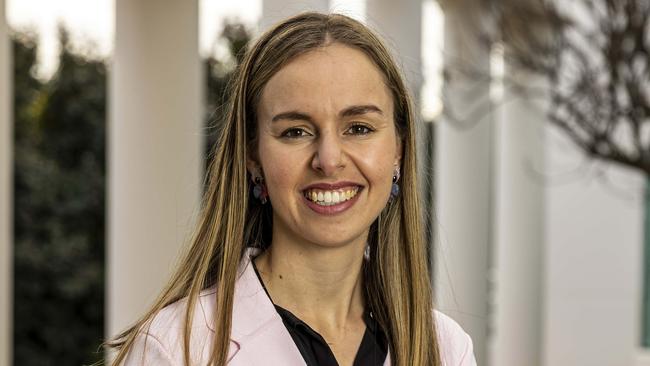Family’s inspiration helps to drive Indigenous jobs pioneer
Shelley Cable sees herself as an example of the transformative effects of economic independence.

Shelley Cable sees herself as an example of the transformative effects of economic independence.
The young Perth executive acknowledges her great grandmother Dot Ninyette as the matriarch who changed her family’s fortunes over three generations. It is heartbreaking for Ms Cable to know that the widowed mother of 11 was required by West Australian law to effectively denounce her Aboriginality in exchange for the right to work. She was a cleaner who delivered newspapers.
“She managed to hold down three jobs,” Ms Cable said.
“It was an upward spiral for my family.”
Ms Cable’s latest project is a snapshot of the positions held by Aboriginal and Torres Strait Islander people in Australia’s top companies. As chief executive of GenerationOne, an initiative to end economic disparity between Indigenous and non-Indigenous Australians, Ms Cable has overseen the first comprehensive analysis of where Indigenous Australians are employed, what roles they hold, and at what level.
The Australian Indigenous Employment Index, conducted in partnership with Bankwest Curtin Economics Centre, includes a road map for employers to promote and encourage Indigenous Australians into senior jobs.
The report was made possible because of the co-operation of ASX-listed companies – some of Australia’s biggest by market capitalisation – along with a number of high-profile private companies and non-profits and government departments collectively employing 5 per cent of the nation’s workforce.
“They shared their internal and confidential data with us and they trusted us … to build a comprehensive picture of what Indigenous employment looks like,” Ms Cable said.
The report finds a commitment to reconciliation.
“I think they have had the commitment for a while,” Ms Cable said. However, one of the index’s key findings is that employers are failing to retain Indigenous employees at the same rate as non-Indigenous employees. Often, recruitment is prioritised over retention.
Overall, 2.2 per cent of the workforce in the organisations that took part in the report are Indigenous.
Indigenous employees are almost entirely absent from senior management and executive leadership levels.
While 81 per cent of the organisations in the report provide training and education to stamp out racism in the workplace, more than half of the Indigenous workers surveyed said they had experienced racism directly or indirectly at work.
Ms Cable said the report provided some clear answers. For example, the Indigenous employment rate was more than double in organisations that put an Indigenous person in charge of Indigenous employment projects.
GenerationOne, founded by billionaire philanthropists Andrew and Nicola Forrest, considers the report a road map as well as an analysis of the status quo.
Ms Cable believes in the power of good policy to change many people’s lives for the better. She also believes that one good job can improve the standard of living of an entire family forever.
“I am so convinced that one person holding down a job can change the trajectory of a family through the generations,” she said. “My own personal family story tells me that.”




To join the conversation, please log in. Don't have an account? Register
Join the conversation, you are commenting as Logout